Getting to know Nowruz
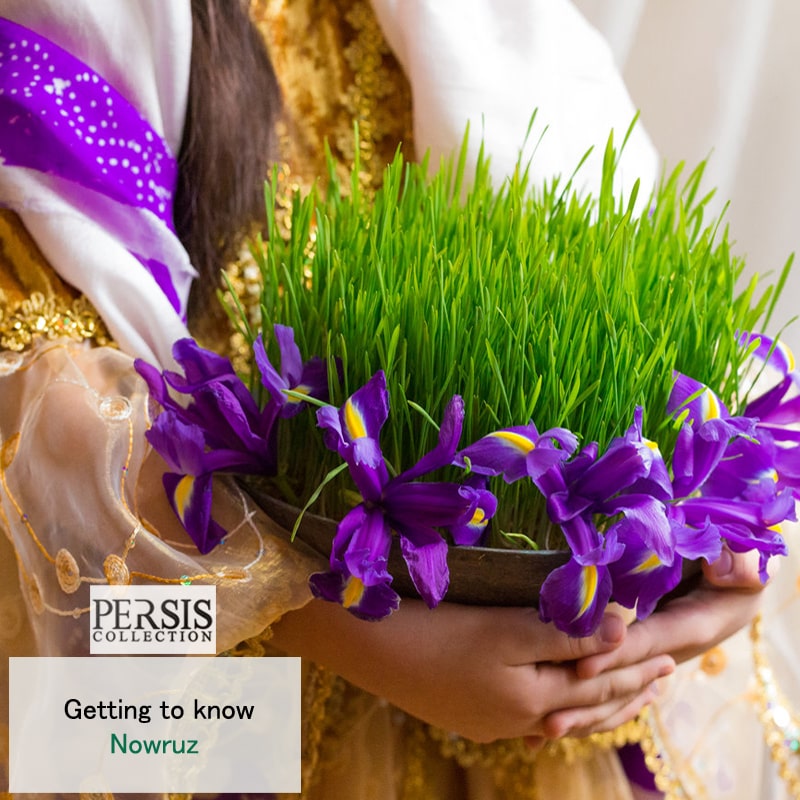
- Persis Collection
- 12 December 2022
- Blog
- 9 minutes
Iranians have celebrated Nowruz, one of their oldest festivals, every year on the first day of Farvardin. People consider this day more special than any other day of the year. That’s why Iranians celebrate Nowruz as a national holiday, with unique customs in every region of the country. In the meantime, the Nowruz official holiday provides an opportunity for families to see and visit relatives and rest, prepare for different domestic and foreign trips, and make the memory of these days more lasting.
Nowruz in ancient Iran deals with the background, ceremonies, and events related to Nowruz in ancient Iran. Nowruz dates back to the times before the formation of Iran and before the period of the Medes and Achaemenids, but its name is not in the Avesta. Since 3000 BC, people in Central and Western Asia have celebrated two Eids: the Eid of Creation in early autumn and the Eid of Resurrection at the start of spring. Later, two autumn and spring Eids became one Eid, and people celebrated it in the spring.
The Cultural Background of Nowruz
Nowruz, also known as the Persian New Year, is a vibrant and ancient celebration marking the arrival of spring and the start of the new year in the Persian calendar. With roots tracing back over 3,000 years to Zoroastrian traditions, Nowruz is observed by millions of people across Iran, Central Asia, the Caucasus, and parts of the Middle East. The holiday typically begins on the vernal equinox, symbolizing renewal, rebirth, and the harmony of nature. Families prepare by thoroughly cleaning their homes and adorning their spaces with the “Haft-Seen” table—a symbolic arrangement featuring seven items starting with the Persian letter “S,” each representing prosperity, health, and good fortune. Nowruz is also a time for feasting, exchanging gifts, visiting loved ones, and honoring the balance between light and darkness, embodying the spirit of hope, unity, and new beginnings.
Getting to know Nowruz
Eid means joy and happiness that are repeated every year. They said: The day when people gather together is called Eid. Ragheb Esfahani has taken Eid from the word “Oud” which means returning to the favorable state of the past. Nowrooz is one of the famous festivals of ancient Iran, which Iranian people celebrate with the arrival of the new year and congratulate each other on this Eid.
Norooz is one of the festivals of ancient Iran, which people still celebrate more magnificently every year after the passing of years. Nowruz is associated with the beginning of the new year, and people follow different customs during these days and congratulate each other on the new year. Join us for a more detailed review of this celebration with a history of three thousand years.
Nowrooz is a word in the Middle Persian language and has its roots in the Avesta language. In today’s language, this word is interpreted in two ways:
Common Nowruz: The day on which the new year begins and is known as the spring equinox day (the equality of night and day.)
Special Nowruz: The sixth day of Farvardin is called special Norooz, which is referred to as “Khordad Day.”
In ancient times, Nowruz was known as “Nava Sarda,” and means New Year. During the Achaemenid period, Nowruz was also known as “Nosard” and “Nosarji.”
In the solar calendar, the first day of Farvardin is called the beginning of Nowruz. Nowrooz begins when the sun crosses the equatorial plane of the earth and moves to the north of the sky. This starting moment is called the first moment of Aries. In the solar calendar, Noruz is considered equal to Hormuz day or Ormuzd day in the month of Farvardin.
Celebrating Seasonal Eids in Central and Western Asia
Nowruz is the first day of spring, and nature wakes up from a long sleep and resumes its life. Iranians also celebrate the beginning of the new season of nature every year. They try to mark a renewed and loaded season by clearing their hearts.
We know the ancient festival of the Persian New Year, which has customs and rituals such as cleaning the house, seeing and visiting, Haft Sin, colored eggs, eating vegetable pilaf with fish, etc. The first four days of Farvardin are considered the official holiday of Nowruz, and people go to see their relatives and congratulate each other on the new year. The 12th and 13th of Farvardin are the Islamic Republic of Iran and Thirteen Badr, considered official holidays.
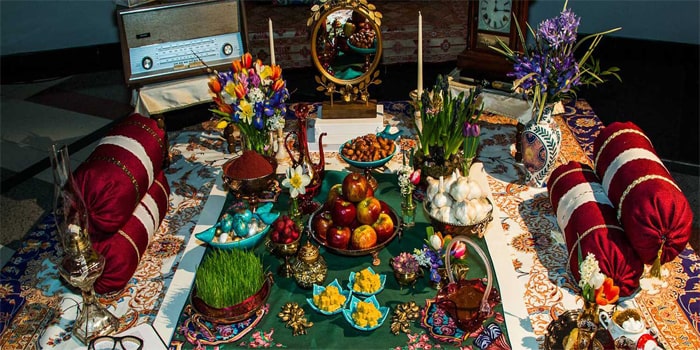
The Philosophy of Nowruz
Nowrooz is a heritage that is celebrated every year at the beginning of the new year in different parts of the world, especially in Iran and Afghanistan. Of course, the beginning of the new year in some other countries such as Turkey, Tajikistan, Georgia, Russia, the Republic of Azerbaijan, Kyrgyzstan, Kazakhstan, etc. is also accompanied by several days of official holidays, and people celebrate the arrival of these days.
According to the existing legendary narratives, Norooz was created during the time of Jamshid, the fourth king of Pishdadi Iran. Avesta, one of the oldest books of ancient Iran, it is mentions a person named Jamshid who had the power of Farah Izadi. With Ahura Mazda’s order, Jamshid began to fight against Ahriman; Because Ahriman caused much damage at that time, including famine and drought.
After Jamshid defeats the Ahriman, happiness, and blessings return to the land of Iran, and the drought disappears. People later named this day “Nowruz” or “New Day” and immortalized this ancient celebration by planting barley in a pot.
Famous poets and writers such as Abulqasem Ferdowsi, Aburihan Biruni, and Tabari also consider Jamshid to be the chief founder of Nowrooz.
In another narration in the Shahnameh, it is stated that Jamshid, on his journey to Azerbaijan, ordered a bed and a splendid crown to be prepared for him. When the sun shines on this gorgeous crown, the world becomes full of light, and because of people’s happiness, “Nowruz” is born.
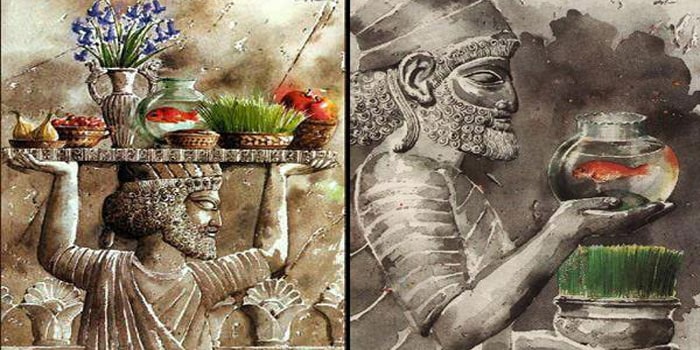
The origin of Nowruz in Iran
Nowrooz is one of the significant events in the solar calendar of Iranians. This national holiday starts on Farvardin 1st, and people celebrate the Nowruz holiday. Persian New Year is one of the oldest festivals left over from ancient Iran, and after three thousand years, it has kept the national bond strong.
Until now, no researchers or historians could claim when the Nowruz celebration came to our country. However, the remaining works prove that Norooz was celebrated during the Achaemenid period. Even during the Sassanid period, Nowruz was expressed as “Nug Roch” in Middle Persian, but over time, the word Nowruz was created by removing “G” and changing “Ch” to “Z.”
Everyone attributed Nowruz to King Jam or Jamshid of Pishdadi in ancient history and the Hindu scriptures. When Jamshid leaves his palace south of Lake Urmia, he is impressed by the freshness and beauty of spring. He names that day Noruz and officially announces that particular customs and traditions will be arranged every year on this day. He celebrates the renewal of nature.
Therefore, in general, Nowruz’s origin and time in Iran are unknown. However some historical narratives attribute the beginning of Norooz to the Babylonians, that is, the time of Cyrus the Great’s attack on Babylon. Also, according to some other narrations, Zoroaster was the founder of Nowruz.
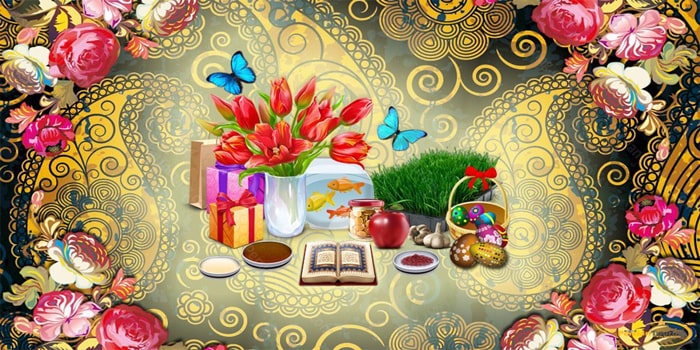
The officialization of Nowruz in Iran
According to historical narratives, the true roots of Nowruz trace back to ancient Iran. However, many historians attribute the first celebrations of Nowrooz to the Sumerians, often considered the earliest human civilization. From Sumer, Nowruz spread to Akkad, then to Babylon and Assyria, eventually making its way to the Elamites. As one of the earliest civilizations in Iran, the Elamites passed the tradition to the Achaemenid and Sasanian eras, ensuring its preservation and evolution over time.
Cyrus the Great, the founder of the Achaemenid Empire and the first Iranian king to officially recognize Noruz, declared it a national holiday in 538 BCE. Cyrus marked this auspicious day with special activities, such as elevating soldiers’ ranks, organizing public clean-ups of homes and communal spaces, and granting pardons to prisoners. His actions cemented Noorooz as a celebration of renewal, harmony, and social unity, a legacy that continues to resonate deeply in Persian culture today.

The observance of this ritual continued during the time of other Achaemenid kings so the Nowruz celebration was held in Persepolis during the time of Darius I of Achaemenid. On the Nowrooz, a gold coin was minted with the image of a soldier shooting. It is notable that during the Achaemenid period, the Noruz celebration was very long, and from Esfand 21 to Ordibehesht 19, people used to feast and celebrate.
Global registration of Nowruz
In general, Nowruz has Iranian roots and is more than 3 thousand years old, but this day is also celebrated in other countries. Therefore, the United Nations General Assembly registered Nowruz in its calendar on March 4, 2009, corresponding to February 23, 2010, and accordingly, March 21 was recognized as the “International Day of Nowruz” in the Gregorian calendar. Also, on the eighth of Mehr 1388, the scientific and cultural organization of the United Nations, known as UNESCO, registered Nowruz as a world heritage.
Therefore, on the 7th of April 2009, for the first time, the world celebration of Nowrooz was held in Tehran with the presence of heads of different countries, and every year this ancient ritual is celebrated by hosting one of the countries. Also, in 1391, Nowruz was celebrated for the first time in the public arena of the United Nations and UNESCO, hosted by Iran.
Iran’s official holiday for Nowruz lasts 4 days, starting on Farvardin 1. But schools stay closed until the 13th day of Nowruz.
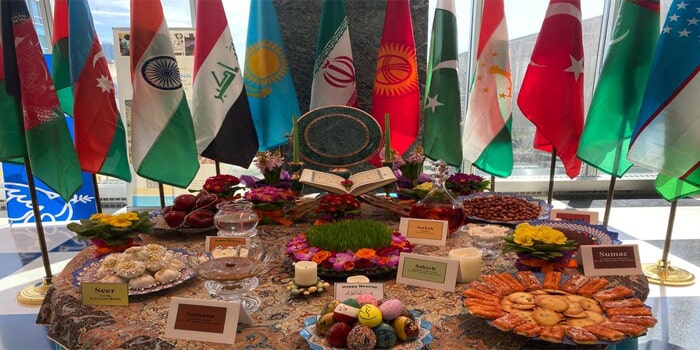
Customs of Nowruz
The customs of Nowruz, the Persian New Year, reflect Iranian culture and identity. These days bring Iranians closer together. Nowruz celebrates spring, nature’s regrowth, and new life. People believe that when nature is renewed, they should wear new clothes and celebrate with loved ones.
In the solar calendar, Nowruz marks the victory of good over evil. It falls on the first day of Farvardin, the start of the year. Since long ago, people have followed special customs during these days. Here are some of them.
Fire Festival (Chaharshanbe Suri)
People start the Persian New Year celebration on the night of the last Tuesday of the year. On this day, they celebrate Chaharshanbe Suri with unique customs. Families light fires on their rooftops or around their houses and jump over the flames. They believe that by jumping over the fire, they remove all diseases and impurities from themselves. Eavesdropping, spooning, jar breaking, reciting the Shahnameh, etc., are among the most important customs of the Chaharshanbe Suri, which are still prevalent in some regions.

Fire Festival (Chaharshanbe Suri)
Housecleaning
Among the other customs of the Iranian people in Norooz, we can mention housecleaning. On the eve of Noruz in Iran, the whole house and its accessories are washed and cleaned.
Haft Sin
Many families still follow the tradition of setting the Haft Sin table for Nowruz. They put items like garlic, sabzeh, samanu, coins, oleaster, apples, the Quran, a fishbowl, colored eggs, nuts, and sweet fruits on the table. All the family members gather around it and pray for a blessed start to the new year.
Thirteen Badr
On the 13th day of Farvardin, called Thirteen Badr, Iranians go into nature. They bring food and other items. They tie greens to connect their lives with nature’s joy and freshness. This helps refresh their souls.
Traveling during Nowruz
The 4-day official holiday and the 13-day school break give Iranian families time to prepare for Nowruz trips. Many use these days to travel and go sightseeing. Because of this, planning Nowruz travel becomes important for many families in the last months of the year. Some choose to travel within Iran, visiting different cities. Others look for trips abroad to have a varied holiday.
Persian New Year prayer
People pray at the beginning of the new year. They ask God to improve their lives and guide them to what He thinks is best. This change helps hearts turn away from what is ungodly. It opens the mind, wakes up the conscience, and inspires people to grow closer to God. This transformation means we make spiritual changes in ourselves. We leave behind selfish desires that can destroy us.
Gift giving
One of the traditions of Nowruz is giving gifts to children and minors. This action is an excellent tradition; Because it deepens the love between adults and children.
Visiting
Another famous custom during the Nowrooz holiday is seeing, visiting, and going to the houses of friends and family. According to this custom, people who may not have seen each other in the past year meet again and refresh their memories.
Getting to know Nowruz FAQs:
What is Nowruz, and why is it celebrated?
Nowruz, meaning “new day,” is the Persian New Year that marks the arrival of spring. It is celebrated as a time of renewal, nature’s rebirth, and cultural unity.
How old is the tradition of Nowruz?
Nowrooz has been celebrated for over 3,000 years, with its roots in ancient Persia and connections to Zoroastrian rituals.
What is the significance of the Haft-Sin table in Nowruz celebrations?
The Haft-Sin table is a symbolic arrangement of seven items beginning with the letter “S” in Persian, each representing values like health, prosperity, and happiness.
How long does the Nowruz celebration last?
Nowruz celebrations typically last for 13 days, ending with Sizdah Bedar, a day spent outdoors to mark the conclusion of the festivities.
Is Nowruz celebrated only in Iran?
People in several countries—including Afghanistan, Tajikistan, Azerbaijan, and parts of Central Asia—celebrate Nowruz, showing its cultural influence across the region.
What role did Cyrus the Great play in establishing Nowruz?
Cyrus the Great officially recognized Nowruz in 538 BCE, declaring it a national holiday and organizing special events such as pardoning prisoners and promoting soldiers.
How do people prepare for Nowrooz?
Preparations include deep cleaning of homes (Khaneh Tekani), purchasing new clothes, decorating the Haft-Sin table, and preparing traditional dishes.
What are some traditional foods associated with Nowruz?
People commonly prepare dishes like Sabzi Polo (herbed rice with fish), Reshteh Polo (rice with noodles), and sweets like Baklava during Nowruz.
What is the role of fire in Nowruz celebrations?
Fire symbolizes purification and renewal in Nowruz traditions, especially during Chaharshanbe Suri, the fire-jumping festival held on the eve of the last Wednesday before Nowruz.
Why is Norooz considered a UNESCO cultural heritage?
In 2010, UNESCO recognized Norooz as an Intangible Cultural Heritage of Humanity due to its profound cultural significance and its promotion of peace and solidarity across diverse communities.







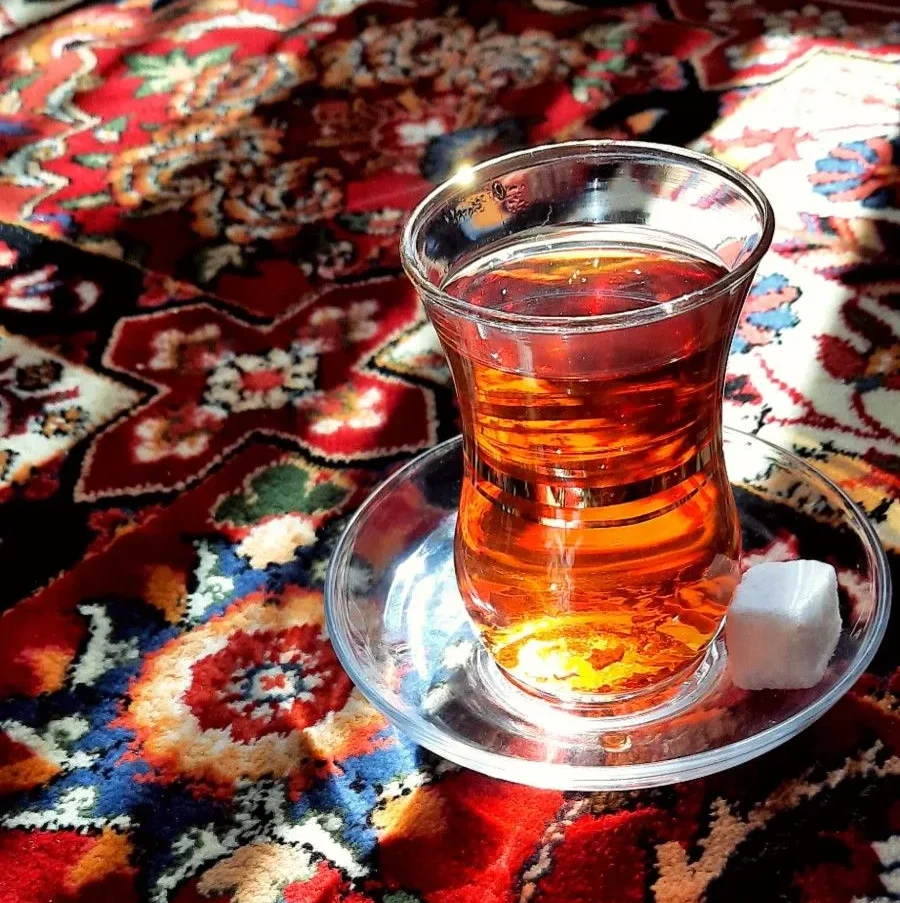
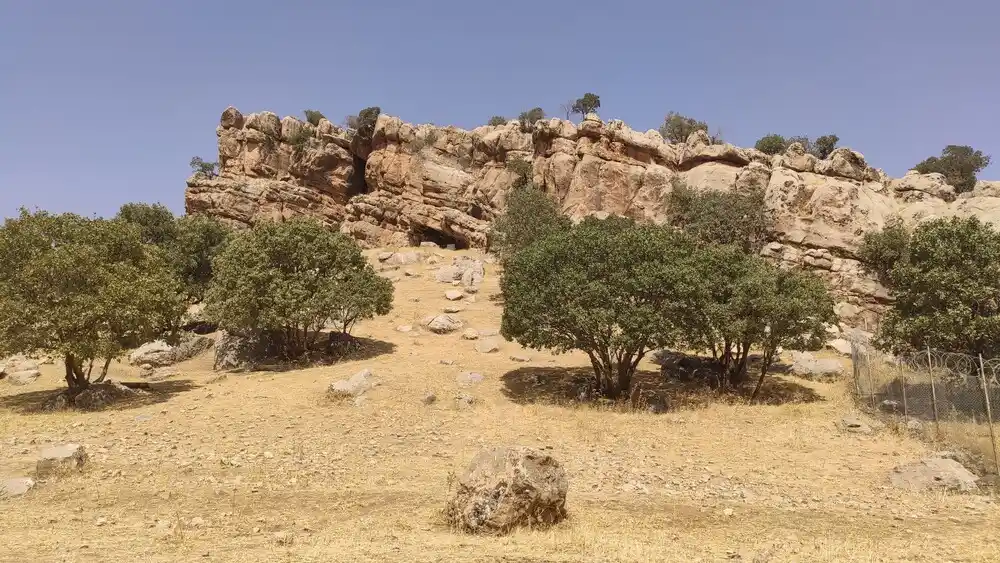
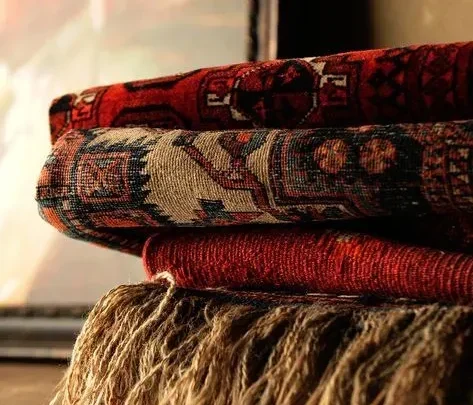
Comments